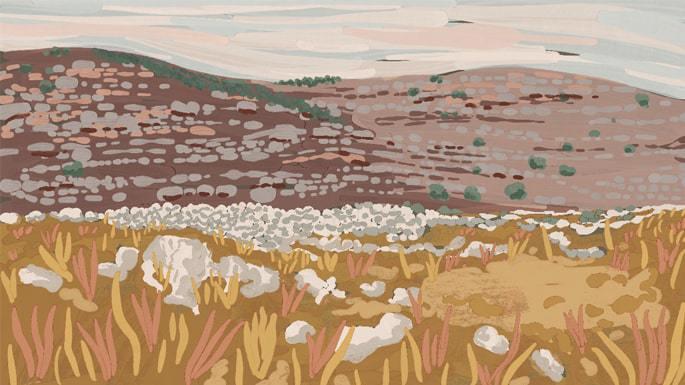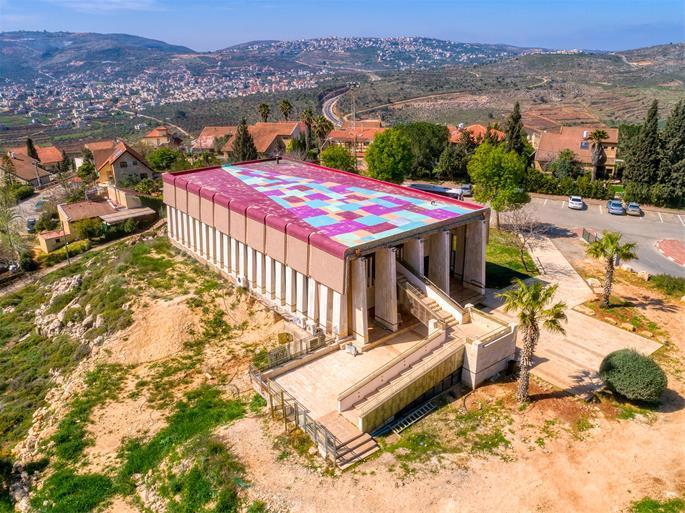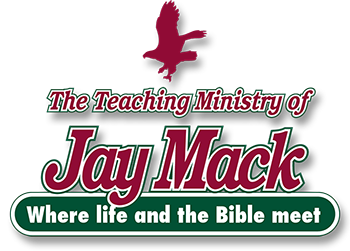The Tabernacle at Shiloh
What happened to the Tabernacle?

Most people are aware of the two holy Temples that stood atop Jerusalem’s Mount Moriah, also known as the Temple Mount. The first was built by King Solomon, destroyed by the Babylonians after 410 years. The Jews were eventually permitted to return to Zion and rebuild the Temple under the Persian King Cyrus. This structure was further enlarged by King Herod who ruled over Isra’el, before being destroyed by the Romans 420 years after its erection. What many people do not realize is that prior to the Temples in Jerusalem the Tabernacle stood in Shiloh, an ancient town in Samaria, for a full 369 years. That is a very long time – far longer than the United States has been an independent country. While Shiloh’s fortunes varied over this time, it was the only place that served as a national religious center for the Jewish people during this period – the era of the biblical Judges.
Such was its importance, that the ancient rabbis taught, “There is nothing differentiating between [the importance] of Shiloh and Jerusalem but . . . that the sanctity of Shiloh was released [once the Tabernacle was no longer there], while the sacredness of Jerusalem is everlasting” (Mishnah, Megillah 1:11).
Another way to gauge the importance of Shiloh is to consider whether it was permissible to offer up sacrifices in any other place, which was prohibited any time there was a national place of worship. Such was the case when the Tabernacle was operating in the desert and when the Temples stood in Jerusalem. The only other time that sacrifices were exclusive to just one location was when the Tabernacle was at Shiloh (Mishnah, Zevachim 14:6).
A place of destiny: When the Israelites settled the Land during the days of Joshua, Shiloh was chosen as the site for the Tabernacle that traveled in the wilderness with them for forty years (Joshua 18:1). There, the temporary white linen curtains, bronze bases, and wooden poles that surrounded the Tabernacle (see the commentary on Exodus, to see link click Ey – The Size of the Courtyard in the Tabernacle) were replaced with stone walls, giving the building a degree of permanence. The only other place that the House of ADONAI (this phrase appears 172 times in the Bible. The first time in Exodus 23:19), and Ark of the Covenant ever enjoyed this degree of stability, was in Jerusalem.
It is evident from several of the Biblical narratives that Shiloh served as a national location in the middle of the country. Its centrality cannot be overstated. Here are some examples: When the Israelites met to apportion the land for the seven remaining tribes, they gathered at Shiloh (Joshua 18:19). It was to Shiloh that the Levites came to demand their assigned cities (Joshua 21:1-2). The tribes of Gad and Reuben departed from Shiloh to their territory on the Eastern side of the Jordan (Joshua 22:9). When the Israelites sent a delegation to confront the tribes of Gad and Reuben for establishing a grand altar by the Jordan, the group left from Shiloh (Joshua 22:12). These, and similar events (Judges 21:12), occurred during the early years of the Israelite settlement in the Land.
Shiloh’s heyday: Skipping forward several hundred years, Eli the high priest served at Shiloh (First Samuel 1:9). People traveled significant distances to make their pilgrimage to Shiloh, which is how we famously encounter Elkanah and Hannah (see Ai – The Barren Wife). Hannah’s heartfelt prayer for offspring at the Tabernacle in Shiloh is one of the most famous ever uttered (see Aj – Hannah’s Prayer). The son she was finally blessed with, who grew up to become the great prophet Samuel, was brought to Shiloh as a child and raised there by ‘Eli (see Am – Dedicated to ADONAI). It was from the Tabernacle at Shiloh that the Ark of the Covenant was carried into war against the Philistines, who captured it (see Bb – The Philistines Capture the Ark). When word of the Ark’s capture was brought back to ‘Eli in Shiloh, he fell back off his chair and died (see Bc – The Death of ‘Eli). The departure of the Ark from Shiloh was highly significant, as it did not return “home” for approximately 60 years, when David had it brought to Jerusalem (see the commentary on the Life of David Cr – The Ark Brought to Yerushalayim).
Later times: Even generations after the Tabernacle at Shiloh no longer stood, the city continued to be associated with significant historic events. The prophet Ahijah of Shiloh warned that the Kingdom ruled by Solomon would be split into two (see the commentary on the Life of Solomon Bz – The First Prophecy of Ahijah). He was the key prophet when the northern Kingdom of Isra’el split from the southern Kingdom of Judah, and loudly condemned the idol worship that was rampant at the time (see the Life of Solomon Dg – The Second Prophecy of Ahijah). The book of Jeremiah tells of the murder of Gedaliah after the Babylonian conquest, some of whom were from Shiloh (see the commentary on Jeremiah Gg – Gedaliah Assassinated) We also read how Jeremiah, a descendant of ‘Eli, greatly lamented the destruction at Shiloh – an event clearly seared into the nation’s memory (see Jeremiah Cc – False Religion is Worthless).
Many hundreds of years later, in the Talmudic era, Shiloh hosted a place of study, and Talmudic literature cites the conduct and teachings of those who lived there. Even centuries after there had been a Tabernacle there, the halo of holiness remained. This is how we may understand the report from the illustrious Rabbi Joshua ben Korcha (a leading second-century sage) who cited the words of an elder: “Once I went to Shiloh, where I smelled the aroma of incense [from the Tabernacle, which had stood a thousand years earlier] emanating from its walls” (Talmud, Yoma 39b).
The mystery of the end of Shiloh: So, what happened to Shiloh, one of the most important places in Jewish history? The Bible does not tell us explicitly, meaning that we shall have to do some detective work to piece the story together. But why are we not told what occurred? After all, this was a place of immense sacredness for the better part of four centuries. Indeed, the termination of Shiloh led to 60 years in which the Ark of the Covenant lacked a proper dwelling place and the Israelites lacked a true national place of worship. The loss of Shiloh was massive, yet we are left guessing what took place. Shouldn’t we be informed about an event of such magnitude?
Perhaps even more difficult to understand is why there is no day of commemoration or mourning for the loss of the Tabernacle at Shiloh. Each year on the Ninth of Av, the Jewish people have a fast day to observe the destruction of the two Temples in Jerusalem (Zechariah 7:3, 7:5, 8:19; Mishnah, Taanit 4:6). The Ninth of Av is the saddest day on the Jewish calendar, during which we sit on the ground and weep, mourning the fall of Jerusalem and the demolition of the Temple in Jerusalem (see Jeremiah Gb – The Destruction of Solomon’s Temple on Tisha B’Av in 586 BC). What is the day that we mark the destruction of the Tabernacle in Shiloh after standing for an entire 369 years? You guessed it, there isn’t one! So how come it gets no recognition?
The most common rabbinic view is that the Tabernacle at Shiloh was destroyed, not through an act of violence by the Philistines. Rather, as the Ark was captured and, as a consequence, the Tabernacle lost its sanctity. Then seemingly, it became permissible for people to use the materials from the structure for their own mundane purposes. According to this view, most likely the city of Shiloh was attacked and destroyed, so the remaining parts of the Tabernacle there were abandoned.
These sources (Rabbi Moses Sofer (Responsa Chatam Sofer, Yoerh Deah response 264; Mahart Chayot to Talmud, Megilla 16b) refer to the “destruction of Shiloh” in the same vein that they refer to the destruction of the Temples in Jerusalem (Maimonides Mishneh Torah Hilchot Beit Habechria 1:2). Some go so far as to claim explicitly that the Tabernacle was burned to the ground as were the Temples in Jerusalem (Rashi midrash on Psalm 74:8). Recently, archeologists found evidence of a terrible fire in Shiloh around the time that the Tabernacle stood, which fits the narrative that it was attacked.
From the words of the prophet Jeremiah, descendant of ‘Eli the high priest in Shiloh for 40 years, it seems clear that something rather bad was involved in Shiloh’s demise. In warning about the looming fate of Jerusalem, ADONAI has these stern words of caution: Go now to the place of Shiloh where I first made a dwelling for My Name, and see what I did to it because of the wickedness of My people Isra’el (7:12). Then why was Shiloh destroyed? The Israelites had taken the Ark of the Covenant into battle against the Philistines. After all, they reasoned, we carried the Ark around Jericho and the walls came tumbling down. The same thing will happen to the Philistines. But they misinterpreted the Ark as a good luck charm and were defeated (First Samuel 4:3-11).
The great prophet Samuel spoke his word of counsel at Shiloh, which had a magnificent beginning. But all Shiloh was at the end of his life was a few piles of rocks in a field of weeds, as every traveler from Galilee to Jerusalem could see. Shiloh was the right place; at Shiloh the right words were spoken. But when the right place no longer pointed people to God and when the right words no longer expressed love and faith, Shiloh was destroyed . . . it never again became a Sanctuary for the Israelites.
There is no account in First Samuel of the burning of Shiloh (was that even too painful to be remembered?), and there is only one other passage in the TaNaKh that even indirectly indicates what had happened. We read in Psalm 78:60: ADONAI abandoned the Tabernacle at Shiloh, the tent He had made where He could live among the people. The Talmudic literature likewise makes several references to the “destruction of Shiloh” (Yoma 9a, Zevachim 102b; also see Mishnat Rabbi Eliezer parashah 1). The same thing was happening during Jeremiah’s day, the Temple had become a good luck charm. So what happened to Shiloh was going to happen to the Temple and Jerusalem for the same reason.
Is it possible to figure out what really happened?
The Rebbe (Likketei Sichot volume 11, pages 175-177) offers a key insight that helps greatly in unraveling this mystery. He draws an important distinction between the dwellings of God in Shiloh and Jerusalem. The structures in Jerusalem were Temples, whereas Shiloh and the portable Sanctuary that the Israelites had during their wilderness wanderings was a Tabernacle. While the First and Second Temples in Jerusalem are repeatedly referred to as a house (for example in First Chronicles 3:1), the place of worship erected in Shiloh is described as a tent (Second Samuel 7:6). Similarly, the Bible calls the portable Sanctuary in the desert a tent no less than 106 times! What is the difference?
It turns out that the distinction is significant. A Temple, like a house, is designed to be permanent, whereas the Tabernacle, like a tent, is inherently intended to be temporary. A house would only be destroyed if something went terribly wrong. A tent, on the other hand, would be taken down when it is no longer needed. When a house is taken down it is a big deal; when a tent gets taken down it is nothing significant, because it was never meant to be permanent.
That, says the Russian-American Orthodox rabbi known as the Rebbe, is why the reason given for the destruction of the First and Second Temples in Jerusalem was “because of our sins” (from the text of the Musaph liturgy) and “due to the sins of Israel” (Rashi midrash on Exodus 38:21). Without a clear reason, a permanent structure would be expected to remain standing. If, instead, it was destroyed, this calls for an explanation. On the other hand, that the Tabernacle in Shiloh came down does not demand an explanation, as it was only intended to stand on a temporary basis. Indeed, the Talmud refers to the period that the Tabernacle stood in Shiloh as “a state of rest,” while the Temple in Jerusalem is called “an ancestral home” (Talmud, Zevachim 102b). Shiloh was but a resting stop on the path to the ultimate chosen place of God (Deuteronomy 12:5).
What gave Shiloh its importance was the fact that the Ark of the Covenant resided there. The structure itself was temporary, but the Ark was permanent. Since the Ark was situated at Shiloh, it attained its unique sacred status. It is therefore reasonable to conclude that once the Ark was captured, the building that had sheltered it lost its importance, and could be abandoned. After all, the building was only ever a temporary solution for housing the Ark. With the Ark gone, the structure held little continued value.
Now we understand the difference in attitude towards the destruction in Shiloh and those in Jerusalem: Shiloh may have hosted an important place of worship for several centuries, but from the outset it was never meant to be forever. It was definitely sad that this illustrious run came to an end, but it had to happen at some point. By contrast, the Temples in Jerusalem were built with the intention that they would remain forever. Their destruction was not inevitable; it was avoidable and should have been avoided. That they came crashing down was therefore a much greater loss and triggered a much more intense reaction.
Bearing in mind that the capture of the Ark had robbed Shiloh of its importance, and the story of the capture of the Ais related in scripture, it may now also be said that the Bible is not silent on the destruction of the tabernacle of Shiloh. The loss of the Ark was its destruction! The actual building may not have been attacked – there was no need for it, because the Ark had been taken and all other essential elements were removed before the Philistines could get there.

Modern Shiloh built its synagogue to resemble the ancient Mishkan (Tabernacle): Shiloh lay in ruins for many centuries. Jewish life was reestablished there in 1978 (formally recognized in 1979), and now boasts a population of around 5,000 residents. Incredibly, the ruins of ancient Shiloh have begun to be discovered. One can now see where the ancient Tabernacle stood all those generations ago. It was easy to identify the site because Judges 21:19 provides a fairly detailed description of its location. Shiloh was one of the most important sites in all Jewish history, in and around which occurred many of the most important events in the Bible, and it is surely amazing to be able to reconnect with a place of such awesome history. While it is difficult to know for sure, it seems that parts of the original walls of the Tabernacle have been discovered, as well as many utensils and artifacts used there.
In Shiloh today, ancient tales of the Bible, including many of the most significant and beloved stories, come to life. We appropriately get excited and inspired at the Kotel, or the Western Wall of the Temple complex in Jerusalem. But there is also plenty to be inspired and excited about a Tabernacle that was established more than a thousand years before the Kotel was built, and which stood for the best part of four centuries.6



Leave A Comment